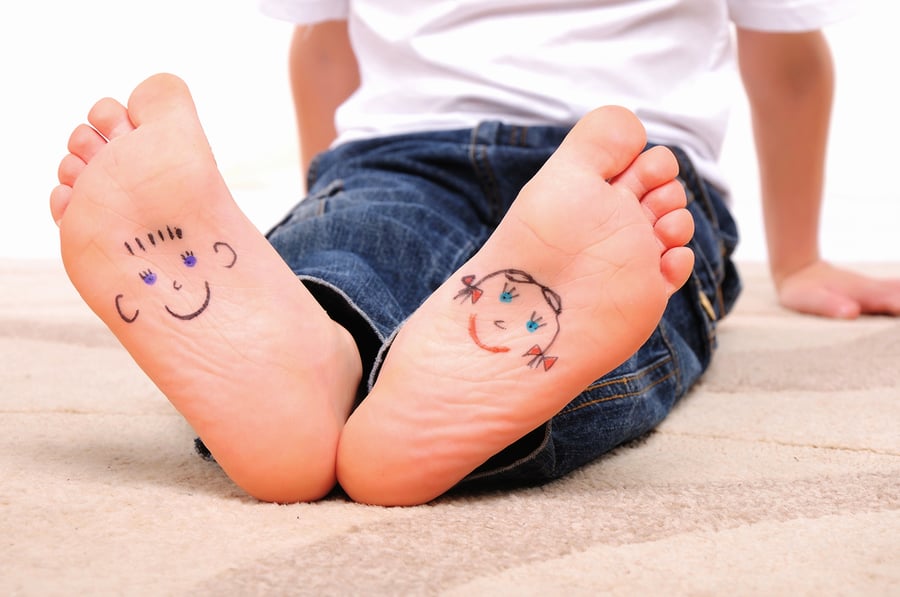Solving Pediatric Foot Problems: What Parents Need to Know

As a parent, you want to make sure your child is healthy and happy. But did you know that children can experience foot issues just like adults? From flat feet to ingrown toenails, podiatrists are available to help diagnose and treat pediatric foot problems.
It is important for parents to pay close attention to their children's feet in order to spot any problems early on. Common signs of foot issues include limping, pain while walking or running, redness or swelling around the toes, blistering or drainage from cracked skin on the feet, lumps or bumps under the skin on the feet, and general tenderness in the arch area.
If any of these symptoms are present in your child's feet, it is advised that you visit a podiatrist for further evaluation.
In this blog post, we will discuss the common types of foot issues in children and how podiatrists can help. Read on for more information about taking care of your child's feet!
Flat Feet
Flat feet is the most common type of foot issue seen in children. Generally, flat feet can be hereditary and requires podiatrist intervention to ensure proper orthotic treatment. If left untreated, flat feet can cause pain while walking and running due to the strain on certain tendons and muscles.
Podiatrists use custom orthotics to help support your child’s arch and ease any discomfort they may have from flat feet.
Ingrown Toenails
Ingrown toenails are also a common problem for both children and adults alike. They occur when the edges or corners of the nail grow into the skin surrounding it, which is usually caused by improper trimming or squeezing of shoes that don't fit correctly.
Ingrown toenails can be very painful and can lead to infection if not treated properly. Podiatrists will assess the nail's shape and size to create a tailored plan of care. This may include trimming the nail and removing any excess skin, as well as providing guidance on how to properly trim the nails in the future. They may also prescribe antibiotics or provide advice on ways to reduce swelling such as elevating their feet or using a cold compress.
Podiatrists recommend trimming toenails straight across and not too short or rounded. Shoes should also fit well; children’s feet tend to grow quickly, and podiatrists suggest getting them checked every six months to ensure they are wearing the right size. Additionally, socks and hosiery should be made of breathable fabrics to keep feet dry and comfortable.
Ankle Sprains and Fractures
Ankle sprains and fractures in children can be very painful, often caused by a sudden twist or overstretching of the ankle bones. The most common symptom is pain and swelling around the ankle joint. Children may also experience decreased movement as a result of the injury.
In more severe cases, where bones are broken, there may be visible deformities such as misalignment of the bones. It's important to have any suspected sprain or fracture evaluated by a podiatrist right away, as these injuries can take quite some time to heal properly and return to normal function when not treated adequately.
If untreated, these injuries can lead to an increased risk of chronic instability or even osteoarthritis down the line. To prevent serious complications and ensure optimal healing, podiatrists offer treatments from doctor-prescribed orthotics to physical therapy which helps improve strength and flexibility around the injured area.
In addition to care from podiatrists, rest is key for children recovering from ankle sprains or fractures so that they receive enough time for their bodies to heal properly and fully recover before returning back to physical activity.
Heel Pain
Heel pain in children is a common podiatric issue that should definitely not be overlooked. It can be caused by a number of factors, including an overload of physical activity, an injury to the area, improper footwear or footwear that does not fit properly, or an underlying medical condition such as psoriasis.
If a young person experiences heel pain on the bottom of their feet or in their Achilles tendon, it's important to seek professional treatment from a podiatrist to determine the cause and develop a plan for treatment.
The podiatrist will likely perform a physical examination as well as ask about other symptoms and lifestyle factors. They may also order diagnostic imaging tests such as X-rays, MRI scans or ultrasounds to further evaluate the child's foot anatomy.
In cases where the child has been active in sports prior to experiencing heel pain, podiatrists often recommend wearing shock-absorbent orthotics and using ice therapy to reduce inflammation and swelling. Heel pads may also be helpful in relieving pressure points on the feet and providing additional cushioning.
For chronic conditions such as plantar fasciitis or Sever's disease which involve inflammation of the growth plate at the back of the heel bone, podiatrists often prescribe steroid injections or other appropriate medications to help alleviate pain and discomfort.
No matter what treatment is recommended, it's important for parents to ensure that their children receive proper rest between athletic activities and use proper techniques when running or jumping.
By seeking podiatric care for pediatric foot issues early on, you can help keep your child healthy and active. With the proper treatment from a podiatrist at Sweeney Foot and Ankle, most foot problems can be resolved quickly with minimal discomfort. So if you have any concerns about your child’s feet, make sure to make an appointment as soon as possible!





.webp?width=500&name=thumbnail_large-1(2).webp)
